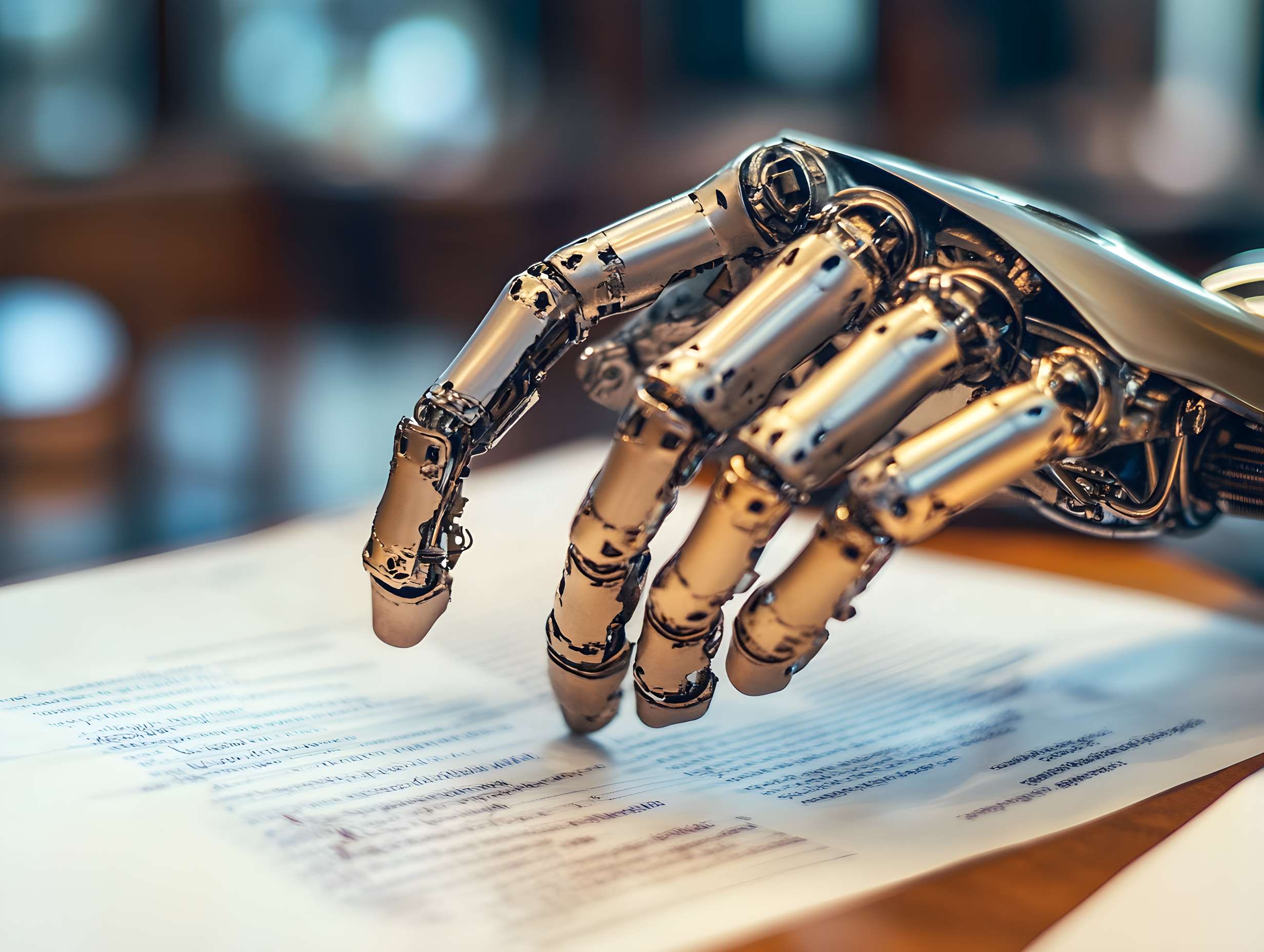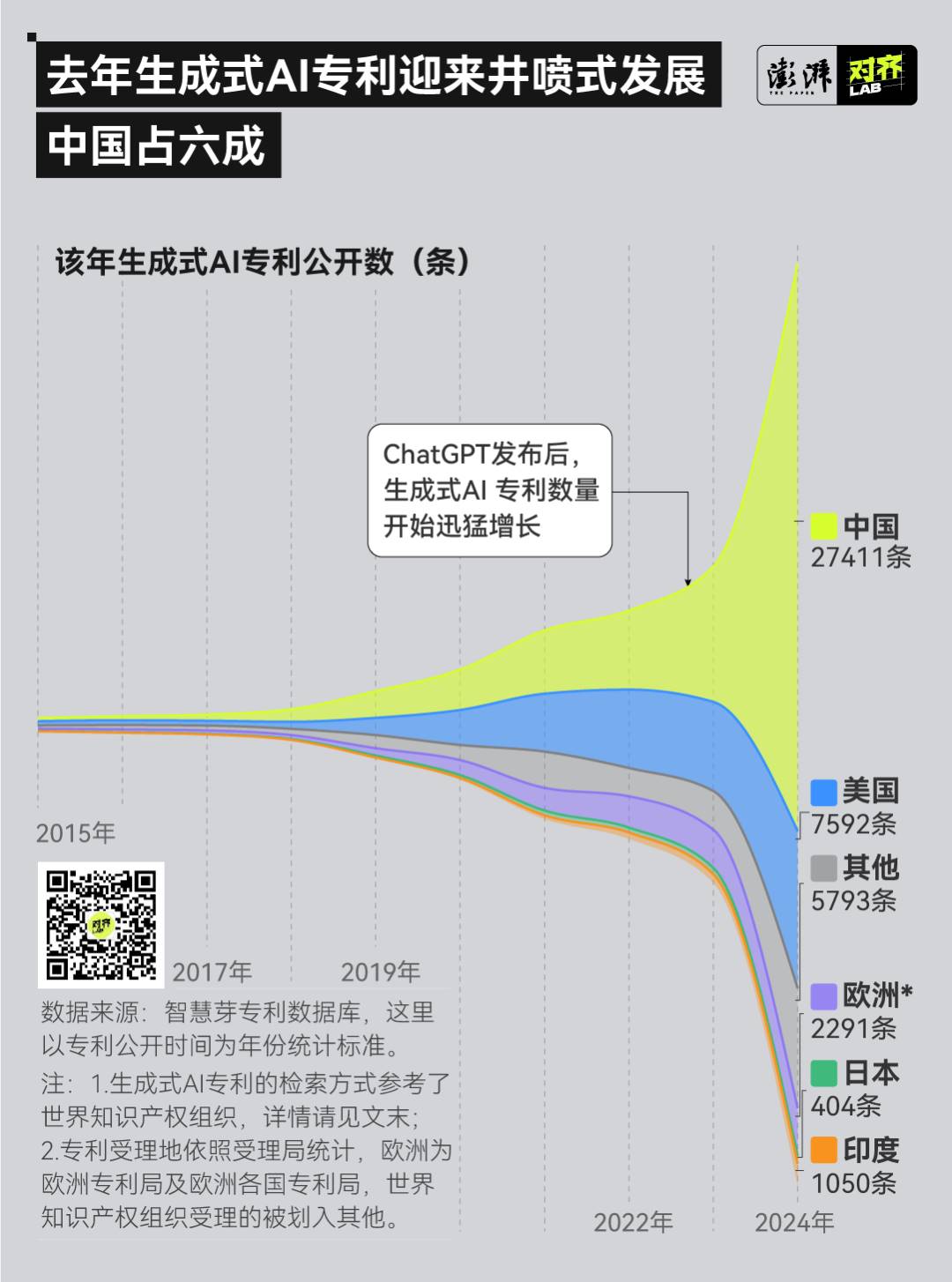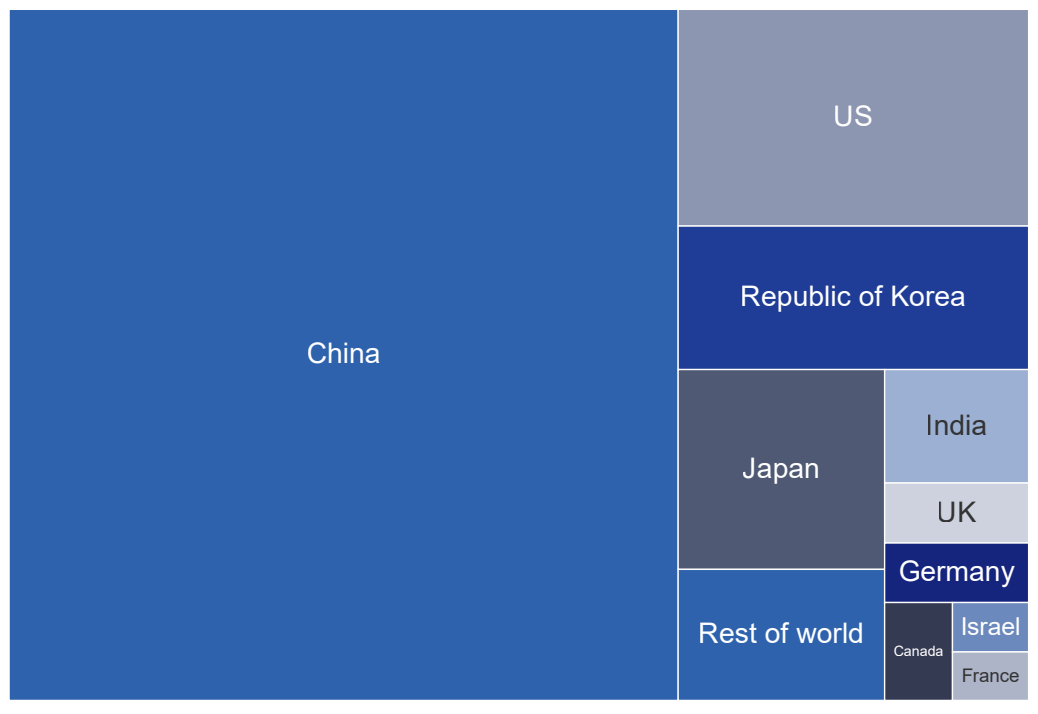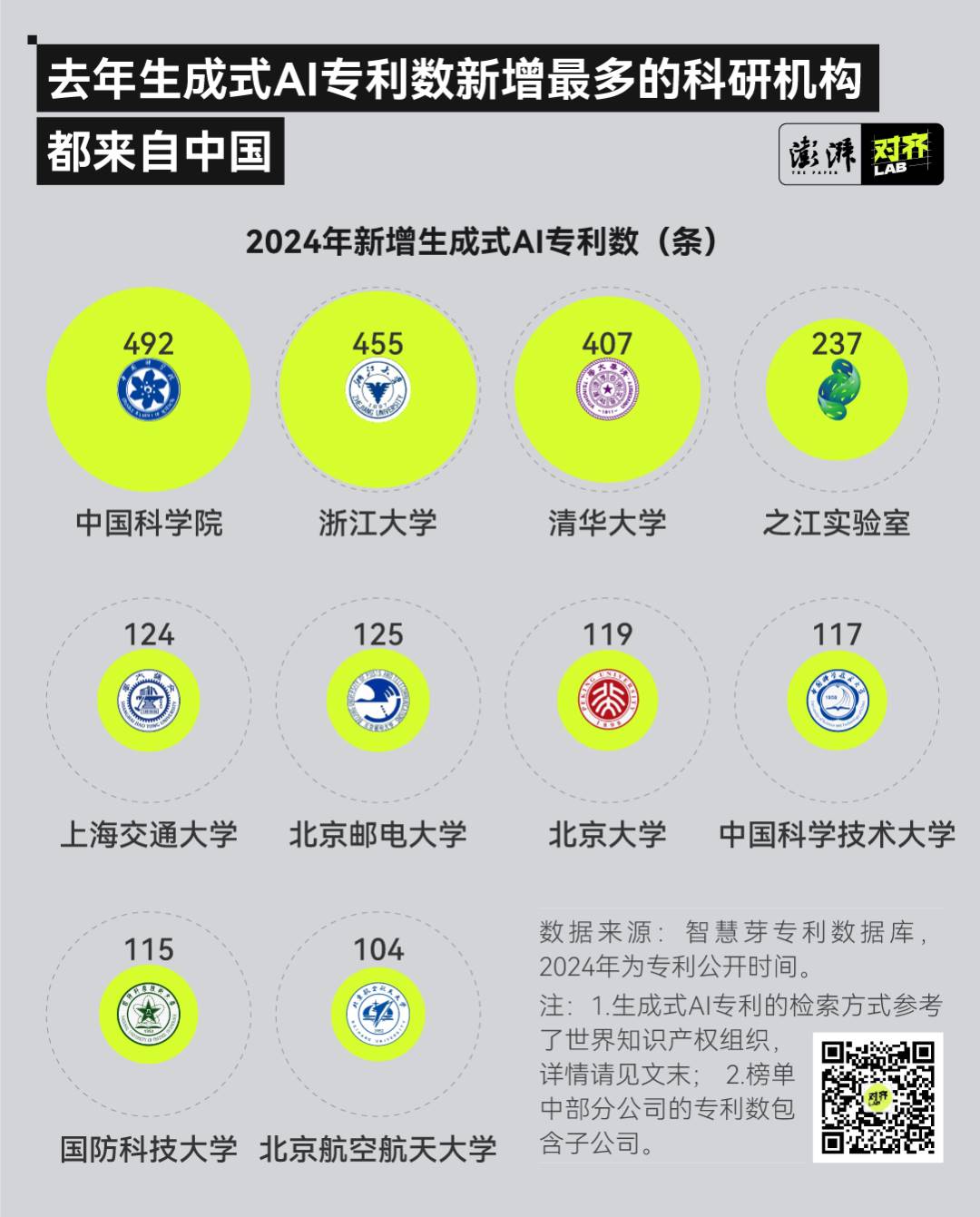AI patents are a leading issue globally, with China and the United States at the forefront.
Source: Align Lab

Image source: Generated by Wujie AI
From February 10 to 11 local time, the Paris AI Action Summit, hosted by the French government and co-organized by the Indian government, attracted leaders from over 100 countries and executives from the AI sector to discuss the impact of artificial intelligence on global development.
Compared to the previous two AI summits held in the UK and South Korea, this summit shifted its focus from safety and risks to the potential of AI development. "AI mother" Fei-Fei Li stated in her opening speech, "We are now in the true 'first AI era'"; Google CEO Sundar Pichai boldly declared, "We are in the golden age of AI innovation, and the biggest risk is missing the opportunity."
As the host of this summit, France set the theme as "Concrete Action," which is interpreted as Europe attempting to compete for influence in AI development. Before the summit, French President Macron stated in a media interview, "We (Europe) must bridge the gap with China and the U.S. in the field of AI."
The Paper analyzed patent data on generative artificial intelligence (GenAI) to present a detailed view of the current global AI competitive landscape.
Significant Increase in Generative AI Patents in 2024
Although generative artificial intelligence is just one branch of AI, its patent share is not high—by the end of 2024, the total number of global AI patents is close to 2.6 million, with generative AI accounting for over 90,000 patents, only 3.6%. However, generative AI has become a prominent field in AI as it can create new content, including text, images, and music, by learning from existing data.
A key moment that drew attention to this technology was OpenAI's release of ChatGPT in November 2022, which showcased the immense potential of generative artificial intelligence globally. Since then, China alone has seen the emergence of hundreds of large models, with products like text-to-image and text-to-video proliferating.
Based on the generative AI patent search method released by the World Intellectual Property Organization (WIPO) in 2024 (detailed introduction at the end of the article), The Paper found that 45,000 new generative AI patent records were added globally in 2024, a number equivalent to the total from the past decade.

Additionally, among the 45,000 newly disclosed generative AI patents in 2024, 27,000 originated from China, accounting for 61.5%, ranking first, while the U.S. ranked second with 7,592 patents. Despite Macron's belief that "Europe is seriously lagging behind in the current global AI race, even out of the 'race'," Europe remains the third-largest recipient of AI patents globally last year.
It is important to note that the recipient location does not fully represent the inventor's origin. In fact, the company with the most generative AI patents published in the European Patent Office in 2024 was South Korea's Samsung (254 patents), followed by the U.S. company Google (54 patents), and third was China's Huawei (51 patents).
WIPO has previously compiled data on the origins of inventors for generative AI patents from 2014 to 2023, with the top five being China, the U.S., South Korea, Japan, and India.

China holds the most GenAI patents, followed by the U.S., South Korea, Japan, and India. Image source: WIPO "Generative Artificial Intelligence"
In contrast to the leading advantages achieved by China and the U.S. in AI development, Europe has been more aggressive in AI regulation, with the EU introducing the world's first comprehensive AI regulation, the "AI Act," which will officially take effect on August 1, 2024.
However, just six months after the law takes effect, the EU intends to ease regulations on AI development. Both Macron and senior EU officials stated at this summit that the EU will simplify regulations on AI technology development to help it thrive in the region.
"Europe's overly centralized regulation means it has not established the necessary advantages in terms of diversity of opinions and capabilities," said Neil Lawrence, a professor of machine learning at the University of Cambridge and a senior AI researcher at the Alan Turing Institute, to The Paper.
Who is Eager to Apply for Generative AI Patents?
From the data on companies applying for generative artificial intelligence patents, we can more intuitively see the gap that Macron is concerned about between Europe and China and the U.S. in the AI field.
According to The Paper's analysis, in 2024, among the top 20 companies with the most generative AI patents, 11 are from China, including Tencent, Baidu, and China Mobile. The U.S. has 7 companies, while Europe has only one, Siemens.
The business giants from China and the U.S. are all making strides in generative AI, which explains Macron's concern that Europe can only play the role of an AI consumer.
In addition to commercial institutions, the academic institutions that added the most generative AI patents in the past year are also from China. In 2024, the Chinese Academy of Sciences ranked first with 492 newly added generative AI patents, followed closely by Zhejiang University and Tsinghua University.

However, some question how much patent quantity can reflect an institution's innovation capability.
In response, lawyer Xia Weifeng, who works in the field of intellectual property, told The Paper, "The number of patents is one of the important indicators of a company's strength in the AI field, as the number of patents can directly reflect the company's technological accumulation and R&D strength." However, he also pointed out that in addition to the number of patents, "it is also necessary to evaluate based on multiple dimensions such as patent quality, commercialization ability, basic research, and ecosystem building." Xia mentioned that the once highly favored "four little dragons" of AI had a considerable overall number of AI patents but faced controversy due to a lack of ability to implement technology.
Additionally, Xia noted that when he discussed AI patents with many R&D personnel from AI companies, he found that R&D personnel generally feel that the iteration speed of AI technology is accelerating, and AI patent applications are becoming increasingly competitive. Some companies plan to apply for a large number of patents systematically to establish their own AI technology barriers.
Whether this model of forming technological barriers through a large number of patent applications is good or bad needs to be viewed dialectically, according to Xia: "Some of our clients are entrepreneurs who are new to the AI field and small and medium-sized enterprises engaged in AI technology innovation. The 'patent jungle' phenomenon has effectively hindered their development, and innovation costs have become higher, raising concerns about restrictions on technology applications." However, it is also necessary to see that "the application and authorization of patents provide Chinese AI companies with a broader market development space, promoting technological transformation and industrial upgrading."
"Open Source" is Not Free, and Patents Are Not Necessarily Monopolies
In addition to the companies holding the most generative artificial intelligence patents, the reporter also found a contrasting situation while sorting through the data:
OpenAI, which launched ChatGPT, has only applied for 30 AI patents to date, all submitted in 2024; similarly, DeepSeek, which has also shaken up the AI field, has only 27 AI-related patents, with patents directly related to training large models, such as "A Method for Constructing Training Datasets for AI Models," also submitted in 2024.
However, discussions about the patent applications of the two companies have taken on two completely opposite tones: for OpenAI, many people wonder why the number of patents is so low, which is practically negligible compared to competitors like Google; while for DeepSeek, more people want to know why it is still applying for patents.
This "double standard" attitude essentially stems from the technological rivalry represented by ChatGPT and DeepSeek:
ChatGPT emphasizes "closed source" (software source code is not publicly disclosed), and WIPO's "Generative Artificial Intelligence Report" analyzes that OpenAI's low patent count is to avoid leaking its technology through patents. In contrast, DeepSeek advocates "open source" (software source code is publicly available), and as soon as the new model is released, training details are disclosed.
Thus, many people ask: why does DeepSeek apply for patents while sharing its technology for free? In response, Xia Weifeng stated that if DeepSeek does not apply for patents in a timely manner, it may be "plundered" for similar technologies by others, or even face litigation threats. Securing patents can effectively reduce future disputes.
In Xia's view, "open source" and "patents" are not oppositional: "Essentially, 'open source' expands the ecosystem, while patents protect core technologies." The key lies in how companies design licensing terms to benefit more people while ensuring their investment returns.
Perhaps as the open-source route represented by DeepSeek gains recognition, more teams will be encouraged to follow suit, creating more efficient and low-cost large models. The patents for generative artificial intelligence are expected to see exponential growth in the future.
免责声明:本文章仅代表作者个人观点,不代表本平台的立场和观点。本文章仅供信息分享,不构成对任何人的任何投资建议。用户与作者之间的任何争议,与本平台无关。如网页中刊载的文章或图片涉及侵权,请提供相关的权利证明和身份证明发送邮件到support@aicoin.com,本平台相关工作人员将会进行核查。




